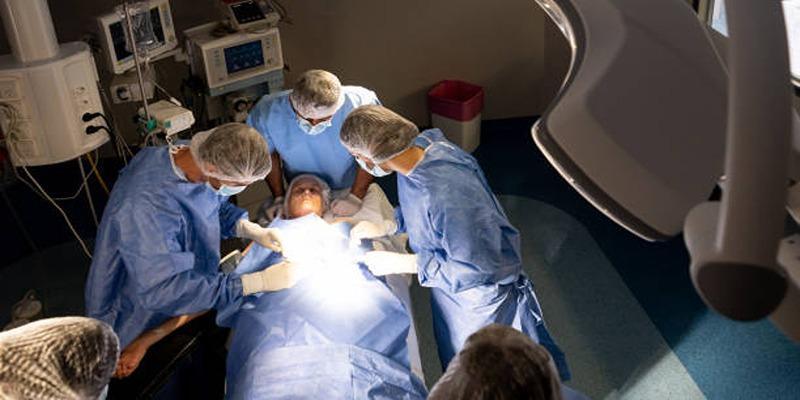Preparing for surgery? Pain treatment and management is essential and regional anesthesia is an emerging alternative that should be considered. As opposed to general sedation, it numbs a part of the body, sending inadequate signals to the mind to feel pain. This guide explains what regional anesthesia is, its types, and its advantages, and what is to be expected, thus allowing one to make better decisions geared towards a safer and more comfortable surgery.
Regional anesthesia is form of pain treatment where medication is injected around a cluster of nerves. This shot temporarily numbs feeling in a specific part of the body, whether that part is an arm or a leg or the lower part of your body. Compared with general anesthesia, you can be conscious, lightly sleeping or sedated, but the surgical site is completely numb.
Look at your nervous system as a sophisticated system of electrical wiring sending pain signals to your brain. Regional selectively blocks a particular nerve pathway with an anesthetic, so that the nerve impulses in this pathway cannot travel any further. That is why it proves so effective in the hands of the surgeon and anesthesiologist. It is most commonly used alone to address some of these procedures or together with other general anesthesia to extend pain management once the surgery is completed.

Regional anesthesia can not be considered a universal tool. Depending on the nature of a surgery, the part of the body that is to be operated on, and the general health of a patient, anesthesiologists employ a variety of techniques. The following are the most common forms of:
A peripheral nerve block focuses on a particular nerve or nerves cluster that regulates sensation in a smaller and more localized region (such as an arm, hand, leg or foot). This is very frequently used in orthopedic procedures, e.g., knee replacements, shoulder repairs or hand procedures.
The anesthesiologist may use an ultrasound machine to lastingly exact the route to the objective nerves to accomplish the block. This visual input makes sure that the anesthetic is applied where they are needed most improving the effectiveness and safety of the block. Peripheral nerve blocks can relieve pain up to several hours (sometimes a full day) following surgery.
Epidurals are commonly used in the birth process, but many also use it during lower body, abdomen and chest surgical procedures. In this procedure, a thin tube known as the catheter is inserted into the epidural space also known as the space outside the protective cover of the spinal cord.
Use of anesthetic medicines is then administered by this catheter block, numbing the nerves that extend to the surgical area via the spinal nerves. Due to the ability to leave catheter in, continuous medication can be applied and this can be a continuous pain reliever, providing ease before and after surgery.
A spinal anesthesia or a spinal block is like an epidural but injected directly into clearing next spinal cord. This causes a deep and quick numbness of the lower half of the body.
Spinal anesthesia is such a fast and effective method that the procedure is commonly used to take place during a C-section, a hip replacement, and hernia repair. The numbing effect does not permanently last, but only temporarily and effective most often during the surgery.

The choice of the regional anesthesia, with or without sedation, has multiple benefits compared to the exclusive use of general anesthesia. Such advantages can translate into a more favorable postoperative experience and experience with the surgery in general.
In the event that regional anesthesia is included in your surgery plan, your anesthesiologist will first sit down with you and explain the process further and address any concerns that you may have.
The site of injection on your body will be sanitized and re-numbed to reduce the discomfort of having the block before injecting the medication into your block. Light sedatives are likely to be administered to you in order to calm you down. In the case of peripheral nerve blocks, an anesthesiologist will guide the needle with an ultrasound. You will experience minimal pressure or a tingling type of experience, but this should not be painful.
In the case of epidurals and spinals there will be a request that you sit up and lean forward or go on your side (with the knees pulled up). This will aid in the uncoupling of the spaces between your vertebrae which makes inserting the needle so much simpler. The numbing effect will start a couple of minutes after injection of the anesthetic. The surgical procedure itself will involve extensive monitoring of your vital signs by the anesthesia crew to make sure you stay as safe as possible.
Regional anesthesia is one of the areas of modern pain management that greatly benefit patients, being a targeted form of pain management that avoids the risk of general anesthesia and opioids without significantly affecting their use. By obstructing certain nerve pathways, it induces recovery in a faster and painless manner. If you are to undergo an operation, discuss the possibility with your doctor. The knowledge of its advantages and disadvantages will help you make a better plan of the surgical experience.
 TOP
TOP
If you still believe that women don’t get heart diseases or that only older people can have heart diseases, you are wrong
 TOP
TOP
How building wealth is possible at any age with practical strategies that focus on consistent habits, smart choices, and long-term thinking
 TOP
TOP
Start making the most of your 401(k) today and secure a stronger financial future. Learn how timing, employer matches, and smart contributions can improve your retirement
 TOP
TOP
How financial aid for college works—from grants and scholarships to loans and work-study programs. Get clear, practical guidance for every funding option
 TOP
TOP
Discover 5 unique horse races that take place around the world, blending speed, thrill, and stunning cultural locations.
 TOP
TOP
Discover how Easter is celebrated across countries, from egg rolling to water fights, offering joy through local traditions.
 TOP
TOP
Explore North Wales’ most breathtaking gardens, from serene floral paths to hillside greenery with sea views.
 TOP
TOP
Wondering if it’s the right time for a loan? Learn how rates, timing, and your finances impact the decision.
 TOP
TOP
Discover the top reasons to pay credit card bills on time and how it safeguards your credit, money, and peace of mind.
 TOP
TOP
Uncover the best experiences in Rome, Italy, with this essential guide. Walk through ancient ruins, explore piazzas, visit historic churches, and get to know the Eternal City at your own pace
 TOP
TOP
Discover the best places to stay in Nashville, from lively downtown hotels to charming neighborhood rentals. Explore top areas suited for music lovers, families, and anyone seeking the perfect Nashville experience
 TOP
TOP
Thinking about a lease buyout? Learn how to evaluate your options, compare costs, and decide whether keeping your vehicle is the right move. Understand the financial side before making your next step